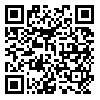Volume 8, Issue 4 (9 2013)
irje 2013, 8(4): 54-60 |
Back to browse issues page
Download citation:
BibTeX | RIS | EndNote | Medlars | ProCite | Reference Manager | RefWorks
Send citation to:



BibTeX | RIS | EndNote | Medlars | ProCite | Reference Manager | RefWorks
Send citation to:
Isazadehfar K, Eslami L, Entezariasl M. Epidemiology of Scorpionism in southwest, Iran, 2008. irje 2013; 8 (4) :54-60
URL: http://irje.tums.ac.ir/article-1-1-en.html
URL: http://irje.tums.ac.ir/article-1-1-en.html
1- , m.entezari@arums.ac.ir
Abstract: (12604 Views)
Background & Objectives: The scorpionism is one of the important public health problem in several parts of the world
becauseeither incidence or severity of envenomations is high and managed with difficulty by health services. The
aim of this study was to describe the epidemiological and demographic information among humans stung by
scorpion in Ramhormoz, Iran.
Methods: In this analytic-descriptive study relevant information were gathered from Imam Khomeini hospital in Ramhormoz, from April 2007 to April 2008.
Results: There were 3799 scorpion victims, 56% were from rural areas. Approximately 20 percent of the sting cases occurred in the month of July (the height temperature in this region). Near 50 percent of victims were between 11-30 years. Most of the stings were seen in exposed extremities (78.4%) mainly in the lower limbs (40.5%). Stings mainly occurred at night between 6 p.m. and 6 a.m (44.3%). The scorpions’ spices were, 53.9% yellow, 12.5% black and 34.6% unknown colors, respectively. The median time from sting to admission to the emergency room (patient delay) was 1.5 hour.
Conclusion: It is suggested that informing people with educational campaign about the importance of receiving prompt attention following a scorpion sting has potential value in reducing complications in the emergency room. We would advise that public awareness and physician readiness combined with the availability of effective antivenom significantly reduced lethality in this region.
Methods: In this analytic-descriptive study relevant information were gathered from Imam Khomeini hospital in Ramhormoz, from April 2007 to April 2008.
Results: There were 3799 scorpion victims, 56% were from rural areas. Approximately 20 percent of the sting cases occurred in the month of July (the height temperature in this region). Near 50 percent of victims were between 11-30 years. Most of the stings were seen in exposed extremities (78.4%) mainly in the lower limbs (40.5%). Stings mainly occurred at night between 6 p.m. and 6 a.m (44.3%). The scorpions’ spices were, 53.9% yellow, 12.5% black and 34.6% unknown colors, respectively. The median time from sting to admission to the emergency room (patient delay) was 1.5 hour.
Conclusion: It is suggested that informing people with educational campaign about the importance of receiving prompt attention following a scorpion sting has potential value in reducing complications in the emergency room. We would advise that public awareness and physician readiness combined with the availability of effective antivenom significantly reduced lethality in this region.
Type of Study: Research |
Subject:
General
Received: 2012/03/5 | Accepted: 2012/09/22 | Published: 2013/09/9
Received: 2012/03/5 | Accepted: 2012/09/22 | Published: 2013/09/9
Send email to the article author
| Rights and permissions | |
 |
This work is licensed under a Creative Commons Attribution-NonCommercial 4.0 International License. |





